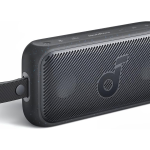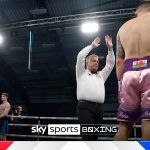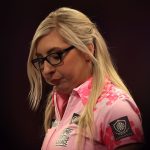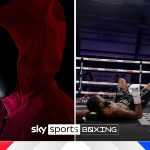- Because children are lighter than adults, buying a kid’s mattress is a bit different.
- Mattresses for kids don’t need to be expensive, but some can be safer and more comfortable.
- The Nest BKB is our top pick because of its support and ventilation.
Choosing a kid’s mattress is different from choosing one for an adult. Because children weigh less, they’re less likely to suffer from aches and pains as a result of a mattress that’s too firm or too soft, said Daniel Ganjian, MD, a pediatrician at Providence Saint John’s Health Center in Santa Monica, California.
Craig Canapari, MD, the director of the pediatric Sleep Medicine Program at Yale Medicine, agrees. Because kids don’t put as much pressure on a bed, most won’t need a high-priced mattress. “For a child, unless they are complaining that they are uncomfortable or that their joints hurt, I would not spend a lot of money on a children’s mattress,” Canapari said.
In addition to speaking with three experts, I researched reviews, including Insider’s mattress guides. The mattresses in this guide are supportive and comfortable but still affordable.
Here are our top picks for the best mattress for kids
- Best mattress for kids overall: Nest My BKB Big Kids Bed
- Best kids’ memory foam mattress: Nectar Original
- Best firm mattress for kids: Novaform ComfortGrande
- Best cooling mattress for kids: Zinus Cooling Copper Adaptive Hybrid
- Best mattress for teens: Casper Element
To find the best mattresses for kids, I spoke with three experts to figure out what a child needs to sleep comfortably. Daniel Ganjian, MD, a pediatrician at Providence Saint John’s Health Center; Craig Canapari, MD, the director of the pediatric Sleep Medicine Program at Yale Medicine; and Lisa Klaus, DC, a faculty clinician at Palmer Chiropractic Clinics, all offered advice on how to choose a good mattress for kids.
Based on their input, I researched reviews to find mattresses kids and parents will both like. I also consulted Insider Reviews’ rigorously tested mattress guides to find reliable brands that make comfortable, supportive products.
Because of kids’ size and resilience, most of our mattress picks are priced under $500.
The best kids’ mattress overall
Nest
Made for kids graduating from a toddler bed, the Nest My BKB Big Kids Bed uses a safe, comfortable, supportive foam.
Pros: Supportive, good edge support, affordable, ventilated foam design
Cons: Weight limit is 120 pounds
Foam-based mattresses discourage jumping on the bed, but they can sink in too much for small bodies. That’s not the case with the Nest My BKB. Rather than buying an adult mattress in a twin size, the Big Kids Bed is made specifically for children. The mattress is a bit on the firmer side, which is ideal for kids graduating from a toddler bed and older kids who often sleep on their sides or back.
Foam mattresses tend to sleep a bit hot, however. Nest worked to alleviate that issue by using a breathable Energex foam. While that may not allow as much air movement as a coil-based mattress, reviewers note that the bed doesn’t sleep too hot. Foam mattresses also tend to lack support towards the edge, which could make it easier for kids to roll out of bed. However, the My BKB has an edge that’s more supportive than most foam mattresses.
Another downside of foam mattresses is that they typically have a smell to them and require airing out for a few days — a process called off-gassing. Nest off-gasses the foam in the factory. Many parents say that the BKB doesn’t have the typical strong odor that you get with a foam mattress. Nest says that the mattress uses a natural fire barrier rather than chemicals.
The best kids’ memory foam mattress
Nectar
The Nectar Original is a reasonably priced memory foam mattress that conforms to the hips and shoulders of side sleepers and reduces motion transfer.
Pros: Soft memory foam, good edge support, reduces motion transfer
Cons: Heavier kids may sink in too much
Memory foam conforms to the body, making it a good fit for kids who tend to sleep on their sides. The Nectar Original is a reasonably priced memory foam mattress, selling for under $400 for a twin. But the mattress is also thicker than many budget options.
The medium firmness also helps kids from sinking in too much and prevents the edge from collapsing too easily. Wirecutter notes that the Original feels cushiony without too much sink. The mattress is constructed with a quilted top layer designed for cooling. While this isn’t going to be as cool as an innerspring mattress, it may help compared to foam mattresses without a breathable layer.
Because this mattress is made for adults, it should still work well for kids as they become teenagers.
The cons to the Nectar Original are the cons to every foam mattress and bed-in-a-box. The mattress will off-gas and should be aired out for two to three days. After being in a box, the mattress will also need that time to fully expand.
The best firm mattress for kids
Novaform
The Novaform ComfortGrande is a denser, firmer memory foam that helps prevent back and stomach sleepers from sinking too much.
Pros: Dense memory foam, 14 inches thick
Cons: Tends to sleep hot, no trial period
The natural sink that comes with memory foam isn’t always best for those who sleep on their back and stomach. The Novaform ComfortGrande is a firmer memory foam mattress that doesn’t sink as much. Wirecutter recommends the mattress for back and stomach sleepers who weigh under 200 pounds.
The top layer is built with a cooling memory foam designed to also wick sweat and sits underneath a quilted cover. Despite its $400 cost for a twin, the mattress is still 14 inches thick. Available from Costco, it’s made from denser foam not often found with budget mattresses.
The downsides to the Novaform ComfortGrande are those common among every memory foam mattress: heat. Memory foam traps heat more than a mattress with springs, so it may not be the best choice for kids who sleep sweaty or have a hard time falling asleep on warm days. Some may also find the mattress too firm, so it’s not ideal for side sleepers and kids who change sleep positions often.
One major drawback is that you can’t test this mattress like you can with the others on our list.
The best cooling mattress for kids
Zinus
The Zinus Cooling Copper Adaptive Hybrid mixes foam and springs for a supportive sleep with more airflow than all-foam beds.
Pros: Hybrid mattress sleeps cooler, springs offer more support, choice of thickness
Cons: Hybrid design may encourage more jumping than all foam
Even memory foam mattresses with cooling layers tend to sleep hotter than the options made with coils. The Zinus Cooling Copper Adaptive Hybrid mattress is made with both an innerspring base and a memory foam top. That allows for more airflow than cooling layer foam. A similar Zinus Cooling Gel Memory foam mattress made our top choice for the best budget mattress on our overall mattress guide.
The foam-with-coil construction offers a mix of firmness with a little bit of bounce. Wirecutter’s pick for a budget mattress, the Zinus Cooling Copper Adaptive is versatile enough for any sleeping position. The 12-inch version is made from a 3-inch copper-infused memory foam layer, an inch of high-density foam, 7.5 inches of pocket coil springs, and a final 0.5-inch high-density foam layer.
As a hybrid mattress, however, it’s going to have more bounce than an all-foam option. Bouncier mattresses are more tempting to bounce on than foam. It’s also going to need to be off-gassed.
For kids who sleep hot, as well as stomach sleepers and heavier kids that need more support, the hybrid design may be well worth considering.
The best mattress for teens
Casper
The Casper Element is a firm, affordable mattress that should last until your teen moves out.
Pros: More supportive for big kids, ventilated foam, limited motion transfer, zip-off cover
Cons: Not as comfortable for side sleepers, bad heat dissipation
Weight plays a major role in how a mattress feels. Bigger kids and teenagers will sink into a bed more than younger or lighter children. That means that a bed that feels medium-firm to a lightweight child may feel too soft for a teenager. The Casper Element is an affordable all-foam mattress that offers a good balance of support and softness for heavier kids and teenagers.
The Element is made from a top layer that’s dotted with small holes to allow heat to escape and a base foam layer. However, Insider Reviews’ James Brains found that the heat dissipation was pretty poor. The design does minimize motion transfer, which would make it a great choice for kids who share a bed.
The top includes a zip-off cover for easier washing. As a mattress that’s made for adults, the Element could last some teenagers into young adulthood. Like other foam mattresses, expect to let the mattress off-gas for a few days.
Brains has tested every Casper mattress and recommends the Nova Hybrid as his top pick, especially for side sleepers. It’s far pricier than the Element but could be worth the investment if your teen is looking for something softer.
Read our full review of the Casper Element.
What else we considered
A couple of brands we recommend make mattresses for kids:
Saatva Youth Mattress: Saatva makes our favorite spring mattress. The kids’ version comes in twin, twin XL, and full and is flippable. One side is geared towards three-to-seven-year-olds and the other is for kids who are between eight and 12.
Purple Kid Mattress: With many of the same features as its mattresses for adults, Purple added a washable cover for the kids’ model. We like the Premier Hybrid‘s pressure-relieving grid, which is great for all sleeping types. This is pricier than any of the mattresses on our list, but Purple claims it will last 14 years.
Here are some models we recommend for adults that you may want to consider for older kids and teens:
DreamCloud Premier Hybrid Mattress: This is our pick for the best mattress overall. It has an average firmness that’s appealing for most sleeping styles. Along with its good motion isolation and edge support, it’s great at dissipating heat.
Zinus Cooling Gel Memory Foam Mattress: From the same company as our cooling pick above, this model has a gel memory foam and is our reviewer’s pick for the best budget mattress. The twin doesn’t come in as many thicknesses as the other sizes, but it’s a sub-$300 mattress that has a lot to offer.
Nest Bedding Flip Hybrid Mattress: Our recommendation for side sleepers on a budget, Nest’s hybrid mattress has two firmness based on which side you flip up. That makes it great for all sleeping styles, plus it gives you some versatility if your child suddenly prefers a softer or firmer mattress.
Tuft & Needle Original: If your kid prefers a firm mattress, we like Tuft & Needle’s original mattress. It’s more suited to stomach and back sleepers than side sleepers, though.
FAQs
What is the best type of mattress for a child?
Because children weigh less than adults, a mattress will feel different to a child than it does to an adult. A parent may sink too far into a mattress, while a child may find that same mattress has the perfect feel. That can make it difficult for parents to pick out the appropriate mattress for their children.
Parents shouldn’t stress too much about mattress selection because kids tend to be more comfortable sleeping on a variety of different surfaces. “Kids are lighter than adults,” said Canapari, “… they are super comfortable on anything.” Parents shouldn’t feel that they need to spend a lot of money on a kid’s mattress, he said. Other factors are more important than a fancy mattress.
“Thinking about your child’s sleep is an important and valuable thing to do as a parent,” said Capanari. “Ensure your kid has a quiet, dark sleeping area [and] consistent bedtime habits, and if you have any concerns, talk to your child’s pediatrician.”
How often should a kid’s mattress be replaced?
Ganjian says that kids’ mattresses generally need to be replaced every five to seven years. But some will wear out sooner while others will retain their shape longer. Lay down on the mattress and feel for any dips and inspect the top for indents that remain after the child has climbed out of bed.
Should parents use a cover for a kid’s mattress?
Canapari says that changing the mattress doesn’t typically solve issues that he sees in his sleep clinic. One of the things that he often recommends, however, is a mattress cover designed to prevent dust mites.
However, these covers are often either pricey or too plastic feeling, so he mostly recommends the covers for kids who have tested positive for certain allergies such as dust mites. Besides allergies, mattress covers can keep mattresses fresh longer, particularly for children prone to bedwetting or sweating. (You can read more about them in our guide to best mattress protectors.)
Should a kid’s mattress be firm or soft?
The heavier the person sleeping on the mattress is, the firmer the mattress should be, said Lisa Klaus, DC, a faculty clinician at Palmer Chiropractic Clinics. That means young kids will typically prefer a softer mattress, while older kids and teenagers may want a firmer mattress with more support. (The same is not true for infants, however. Due to the risk of SIDs, babies need to sleep on a firm mattress that’s specially designed for infants.)
Kids who sleep on their side will typically want something a little softer. “Memory foam is the best choice for side sleepers because it offers support but also cushions areas of pressure points like shoulders, hips, and ankles,” said Klaus.
She also added that memory foam is great for restless sleepers. Memory foam doesn’t bounce like a traditional mattress, which can help kids from waking themselves up when they roll over.
What type of mattress is best for kids?
Like in the nursery rhyme about monkeys, Ganjian receives a lot of calls from parents about kids getting injured jumping on the bed. He said that foam mattresses are his favorite because they absorb the jump, discouraging kids from bouncing.
On the flipside, foam mattresses tend to sleep hot and aren’t ideal for kids that tend to wake sweaty.
The different types of mattresses all have their pros and cons. When it comes to kids, consider what each type has to offer:
- Innerspring. Innerspring mattresses are the more traditional mattress with, as the name suggests, springs inside. These mattresses are often more affordable. Because of the space between coils, they also tend to be more breathable, which is great for those who tend to sleep hot. The springs don’t reduce motion transfer when tossing and turning, however.
- Memory foam. A mattress made with memory foam or other types of foam tends to conform to the body more than a mattress with springs. That can help reduce pressure on the body and keep motion to a minimum, Klaus said. On the downside, the foam doesn’t breathe as well as springs and retains more heat. These beds can also be more expensive.
- Hybrid: A hybrid mattress has both coils and foam. That design makes this type better for more sleep positions, with more support, better breathability, and often more durability, Klaus said. The downside is that they’re heavy and expensive.
What size is a kid’s bed?
In the US, mattresses fall into the sizes in the chart below. We haven’t included any toddler mattresses in this guide. Most children will only sleep in them for a few years, typically between the ages of two and five.
Twin-sized beds can work for kids until they leave home, but older children and teens may prefer a full- or queen-sized mattress.
Check out our other great bedding guides
Brooklinen
Powered by WPeMatico






